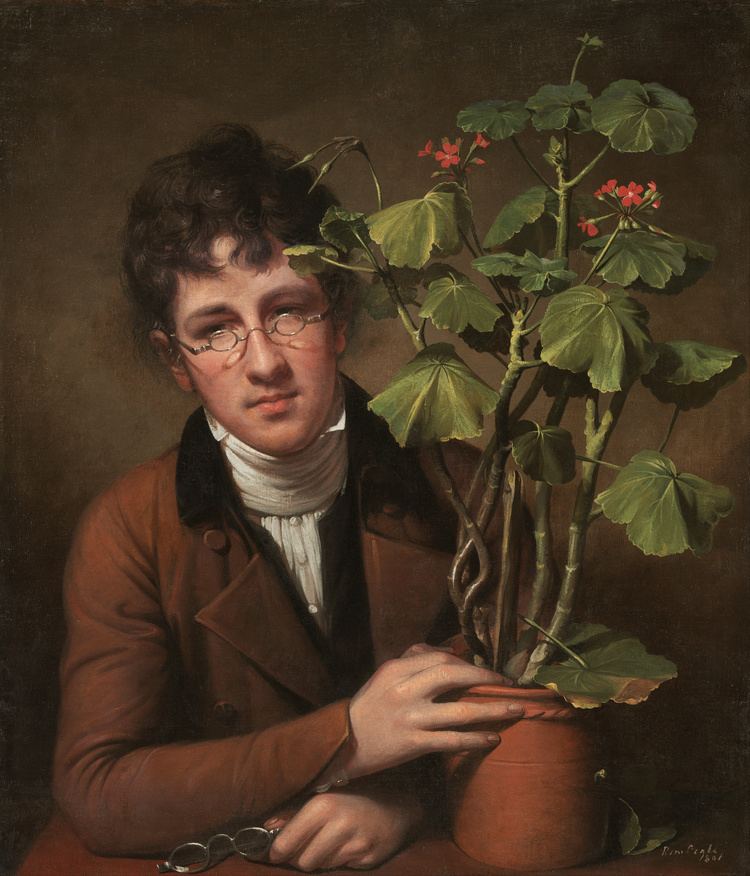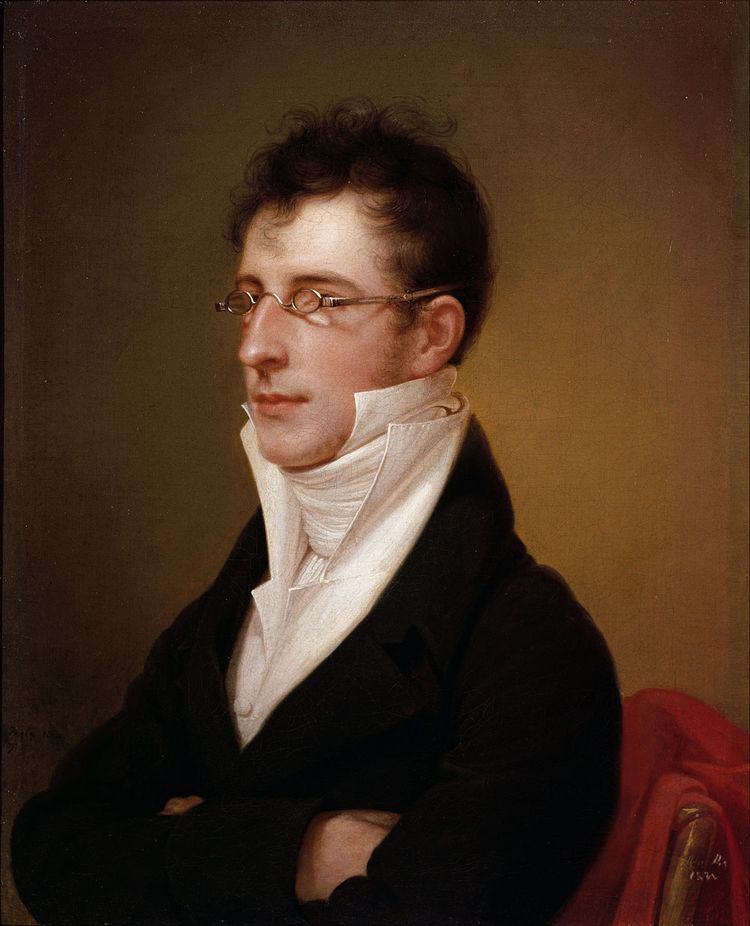Nationality American Died July 17, 1865 Role Artist | Name Rubens Peale Spouse(s) Eliza Burd Patterson Parents Charles Willson Peale | |
 | ||
Born May 4, 1784 ( 1784-05-04 ) Known for Landscape; Museum director Siblings Rembrandt Peale, Raphaelle Peale, Titian Peale Cousins Anna Claypoole Peale, Margaretta Angelica Peale, Maria Peale Grandparents Charles Peale, Margaret Peale Similar People Rembrandt Peale, Raphaelle Peale, Charles Willson Peale, Titian Peale, James Peale | ||
Rubens Peale (May 4, 1784 – July 17, 1865) was an American artist and museum director. Born in Philadelphia, he was a son of artist-naturalist, Charles Willson Peale, and brother of artist-naturalist Titian Peale.
Contents
- Early life and education
- Career
- Diary entries on the death of Abraham Lincoln
- Personal life
- Legacy
- References

Early life and education
He was the fourth son of Charles Willson Peale. Rubens had weak eyes and, unlike most of his siblings, did not set out to be an artist. He traveled with the family in 1802 to the United Kingdom, but was unable to travel on the continent with the resumption of war after the Peace of Amiens. In 1803 he attended classes at the University of Pennsylvania. He became Director of his father's museum in Philadelphia from 1810 to 1821, and then of the Peale Museum in Baltimore, which he ran with his brother, Rembrandt Peale. To promote the museum, he installed gas lighting illumination in the museum.
Career
Peale opened his own museum in New York on October 26, 1825. By 1840, Peale would change the name to the New York Museum of Natural History and Science. The Panic of 1837 sent his museum into debt. It competed with the American Museum, of P.T. Barnum. Rubens had to sell his entire collection to Barnum in 1843. He moved to Pottstown, Pennsylvania. In 1837, he retired to his father-in-law, George Patterson's estate near Schuylkill Haven, Pennsylvania, and lived as a country gentleman, at Woodland Farm. He experimented with mesmerism, and wrote to his brother Rembrandt about it.
In October 1855, he began keeping a journal, and he turned to still life painting, as an extension of his interest in natural history. In 1864, he returned to Philadelphia, and studied landscape painting with Edward Moran. In the last ten years of his life, he produced 130 paintings.
Diary entries on the death of Abraham Lincoln
April 15, 1865:
sad news of the murder of President Lincon [sic], he was shot while attending a performance at Fords' Theater last night in Washington. The assassin entered his private box and shot him in back of his head and then escaped, the assassin's name is ______,
April the 22nd:
The corpse arrived this afternoon from Harrisburg and it was dark, and although the square was brilliantly illuminated with greek lights each side of the great walk Red, Blue & White, which made a most brilliant appearance and lighted up the wholes square & streets yet much of the procession near lost to us. The crowd was so dense in Walnut Street that police could scarcely keep the crowd back.
April the 23rd:
a fine opportunity of viewing the corpse and decorations of the hall, which was totally covered with black cloth except for the statue & portraits of General Washington & wife. I staid [sic] one hour and left Mary gazing on the corpse, she intending to paint a portrait of him...
Personal life
On March 6, 1820, he married Eliza Burd Patterson, (December 6, 1795 – 1864) and they had children Charles Willson, George Patterson, William, Mary Jane (1826–1902) (who also was a painter), James Burd, and Edward Burd. Charles Willson Peale (Feb 15, 1821 – Sept 30, 1871) married Harriet Friel (b. Aug 11, 1830); their son Albert Charles Peale, (1849-1914) became a geologist with the US Geological Survey.
Legacy
In 1985, the National Gallery of Art paid $4.07 million for Rubens Peale With a Geranium, an 1801 portrait by his brother Rembrandt Peale. This set a record for an American work of art sold at auction. Art history and ophthalmology scholars have studied the painting, and have theories for this unusual depiction of eyeglasses.
In 2007, Princeton University Art Museum bought Rubens Peale's Still Life With Watermelon, in honor of John Wilmerding.
